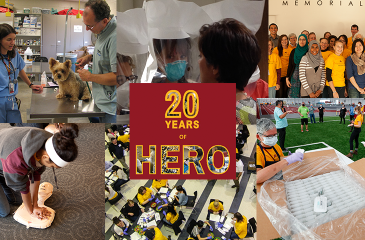Socioeconomic disparities in obesity are substantial. Accurate estimates of obesity levels in Minnesota are available only as statewide estimates, limiting the capability to describe and understand the prevalence of obesity at the community or neighborhood level, and therefore also limiting our potential to increase health care access and reduce health disparities.
An interdisciplinary group spanning the Water Resources Center in the College of Food, Agricultural and Natural Resource Sciences, U-Spatial, and the Minnesota Department of Health is working to generate obesity maps for fine geographic units in Minnesota, a novel practice which would help address these disparities by providing a fine scale data set to demonstrate the impact of obesity, inform policy, and direct targeted programs. There will also be an advisory group made up of University, Minnesota Department of Health, and local public health agencies with community member involvement to help guide the project.
“Our cross-disciplinary group will utilize U-Spatial expertise for guidance on geocoding and spatial regression analysis; as well as expertise from the Minnesota Department of Health for design and map implementation to maximize potential state-wide use and impact; and the Water Resources Center environmental economic expertise for project management, data set design, and spatial correlation framework,” said principal investigator, Lucia Levers, PhD, MS, from the Water Resources Center. Co-investigators include Peter Wiringa, MGIS, Ann Zukoski, DrPH, MPH, and Jacob Walker-Swaney, PhD candidate, MPH.
Oregon has developed an innovative and validated approach using Driver and Vehicle Services data to generate and map obesity estimates by geographic areas. Calculating body mass index (BMI) with heights and weights from state-issued identification and attaching BMI values to point locations allows aggregation to finer spatial units such as census blocks, zip code, county and neighborhood levels. Combining these data with other sources will help the team understand environmental and structural barriers. This approach offers the opportunity for geographically-targeted prevention and management, including areas facing health disparities and factors correlated with obesity reduction.
This new data set would support investigation into spatial correlations between landmarks such as grocery stores, farmer's markets, recreation sites, as well as potential environmental quality through correlations with vehicle emissions. These correlations could provide data and analyses to better understand structural supports and barriers to reducing obesity, design policies, address inequities, and improve health care access statewide.
Levers explains, “We want to develop a framework to investigate spatial correlations between obesity and other factors or landmarks for chronic disease prevention, management, and future research.”
This initiative received funding from the Office of Academic Clinical Affairs BOLD Ideas Grant program which supports interdisciplinary teams seeking to tackle the “wicked problems” inhibiting the health and wellbeing of our communities.



